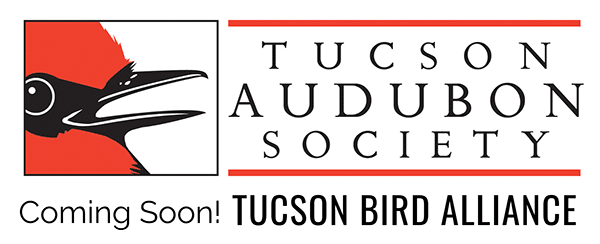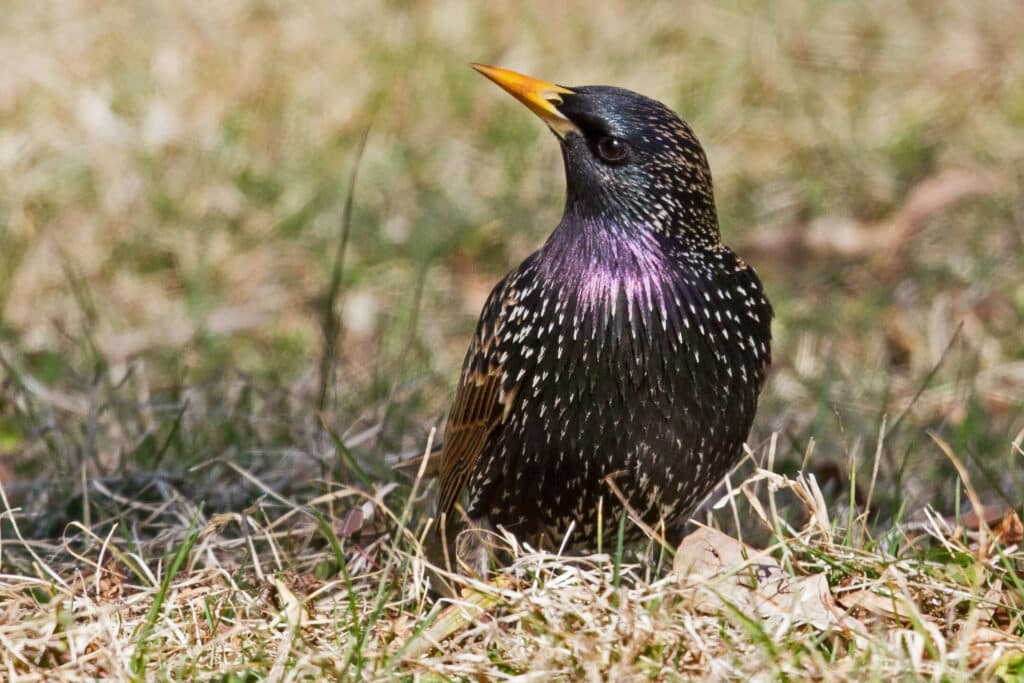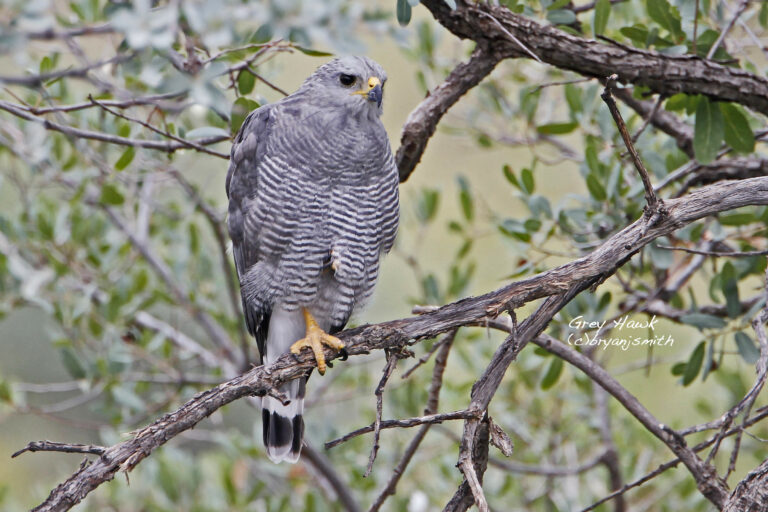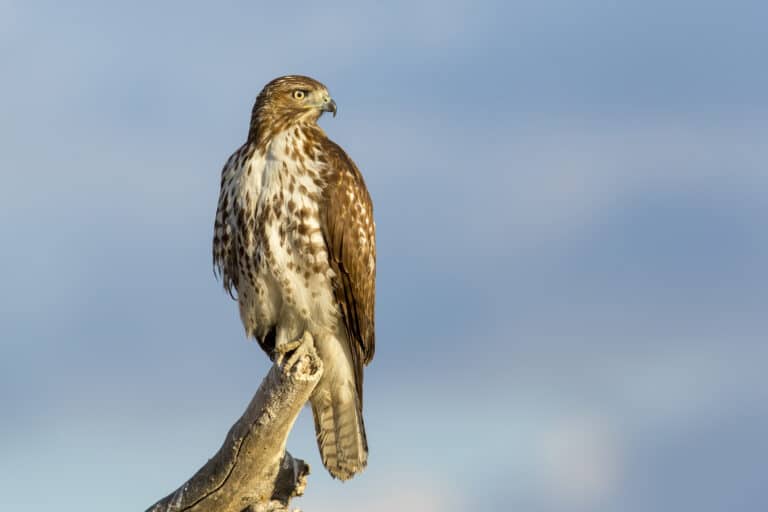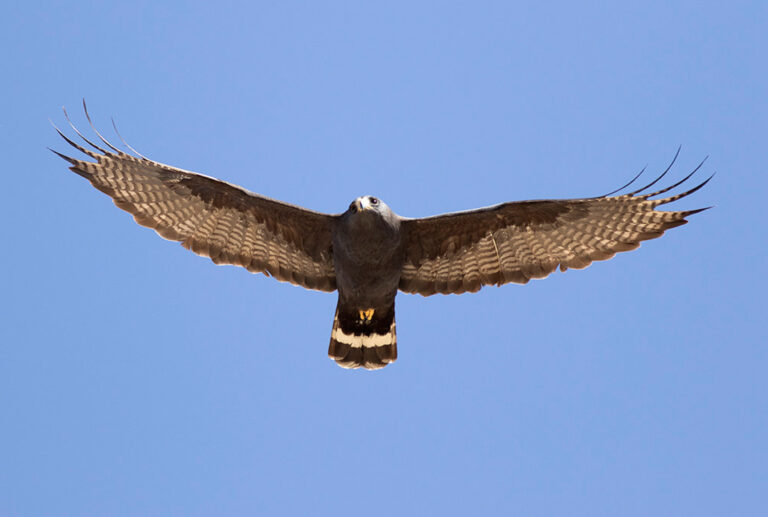In North America, the much-maligned European Starling is an introduced species that is very aggressive toward native birds. I may be biased because I love birds so much, but I have to admit this annoying little bird is pretty exceptional. Its original range was and still is much of Eurasia, the Middle east, and very northern Africa—so how did it get here? It’s believed that about 100 birds were released by Shakespeare enthusiasts (who wanted America to have all the birds that Shakespeare ever mentioned) into Central Park in 1890. The current population here of more than 200 million birds spread coast to coast is arguably the most successful avian introduction to this continent. There are now also exotic populations established in South America, southern Africa, Australia, and New Zealand.
The European Starling’s success is part of what makes them annoying—large numbers of them can take over your yard (or town!), leading to them being thought of as “city trash birds.” They’re noisy and impressive mimics, having a range of whistles, trills, rattles, liquid warbling, and chatter (I can verify, their Brown-headed Cowbird calls are very good!). They also can outcompete many native birds for cavity nesting sites, even in saguaros here in the Sonoran Desert. Luckily, so far, the overall damage seems to be minimal, as a study in 2003 found few actual effects on populations of 27 native species. Worst off may be the actual cavities themselves—starlings fill the holes with so much nesting material that most other species (except maybe the House Sparrow) wouldn’t ever want to use them again!
The very large flocks European Starlings can form also lead to the amazing phenomena of murmurations. Thousands of birds become a shape-shifting black mass that somehow moves in unison without mishap even though there are no birds leading the twists and turns. These mesmerizing and complex events show “scale-free correlation,” where the starlings continually coordinate their movements with their seven nearest neighbors. You likely won’t find huge flocks for murmurations locally, but look for smaller flocks in agricultural areas of the Santa Cruz Flats, Sulphur Springs Valley, and the UA Ag Farm off of Campbell Ave.
Last but not least, the European Starling is a visual stunner. Superficially, it can look like a swallow or martin in flight, with its short tail and pointed, triangular wings. Up close and in the right light, you’ll see the beautiful glossy, purple and greenish iridescence and large, sharp, bright yellow bill. During winter after the annual molt, birds are covered in white spots that gradually wear away (known as “wear molt”) to produce the black look of birds in spring.
Image by Bryan J Smith
